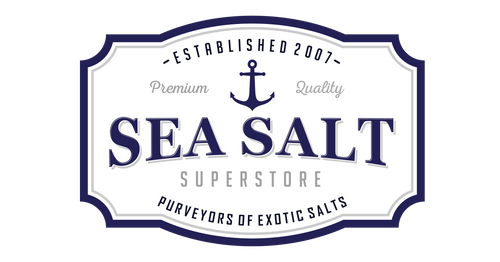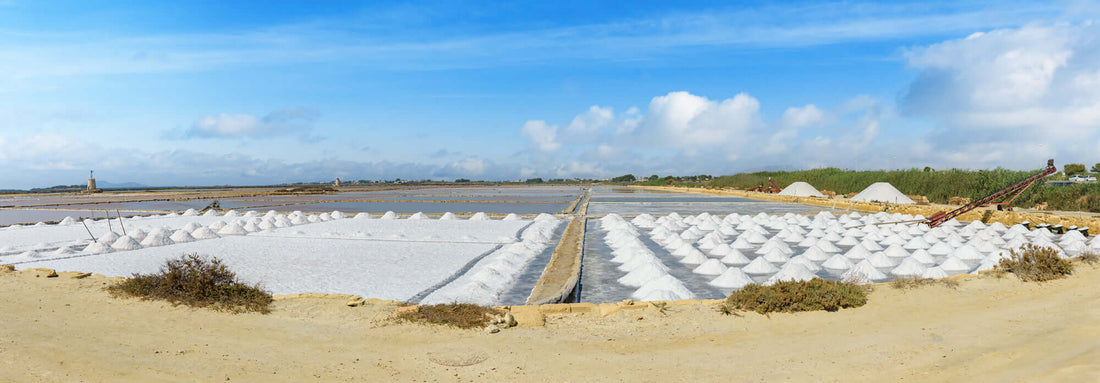One of the oldest forms of salt collection in human history is the harnessing of sun and wind to evaporate saltwater, resulting in beautiful sea salt.
COLLECTING WATER
The first step in the production of solar evaporated salt involves collecting the raw material, which can either be seawater or brine from underground salt deposits. Seawater is commonly used for coastal salt production, while inland operations may use brine obtained through underground wells or solution mining - or even water from an inland salt water lake.
The collected seawater or brine is directed into large shallow ponds or pans called salt pans or salterns. These are like shallow, spacious pools that can hold the seawater or brine, like creating a mini oasis for the sun to work its magic. Before the brine is introduced, any impurities are removed through filtration or settling to ensure the production of pure salt.
USING SUN AND WIND
Once the brine is introduced into the salt pans, the sun's heat and wind start the natural evaporation process. The brine is spread across the pans, and as the water evaporates, the salt concentration in the remaining liquid increases. This is facilitated by the large surface area of the salt pans, allowing for efficient exposure to sunlight.
CRYSTALLIZING
As the water continues to evaporate, the salt concentration increases, and salt crystals form on the surface of the water and gradually sink to the bottom of the pans. The crystals are typically composed mainly of sodium chloride, with trace amounts of other minerals and impurities.
HARVESTING & CLEANING
Next, a careful gathering of those beautiful salt crystals, often using rakes or similar tools. The crystals are gently washed to remove any impurities or remaining brine, so that we have the purest salt possible.
DRYING AGAIN
Last, we want to dry those crystals out one more time. They need to be completely free of moisture, so they can be safely packaged and stored for use later. Once the crystals are dry, they can be crushed, ground, or screened into different sizes, depending on the desired final product. From fine table salt to coarse salt or even fancy specialty salts, the possibilities are endless - powder, extra fine, fine, small, medium, coarse, extra coarse, even extra extra coarse - and from all over the world, too.





